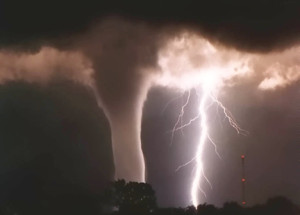 The challenges that small businesses deal with never end — and for the small number of employees who have to take on these tasks, it can quickly get overwhelming. No wonder, then, that many small businesses have all but ignored the important task of developing a disaster recovery plan, which involves understanding the risks of the disasters that small businesses face, figuring out how best to prevent against the deleterious effects of these disasters, and implementing a business continuity solution to minimize downtime.
The challenges that small businesses deal with never end — and for the small number of employees who have to take on these tasks, it can quickly get overwhelming. No wonder, then, that many small businesses have all but ignored the important task of developing a disaster recovery plan, which involves understanding the risks of the disasters that small businesses face, figuring out how best to prevent against the deleterious effects of these disasters, and implementing a business continuity solution to minimize downtime.
Importantly, the disasters that cause small organizations the most damage are the ones that many business owners may not consider to be all that common, such as hardware failure and power outages. This blog post aims to illuminate five common disasters that small businesses face, so that business owners have a sense of perspective when considering the importance of a disaster recovery strategy. You would probably guess the most common disasters are caused by floods, tornadoes, and other major storms. You will be surprise to learn that common causes are much smaller problems that have huge impact on businesses.
1. Hardware failure
One of the most disruptive disasters that can strike a small business at any time is hardware failure. Whether it is a clicking hard drive in an email server or a fried motherboard inside a central file server, any kind of hardware failure can result in the inability to access critical data. Possibly the worst aspect of hardware failure is that it is inevitable, yet completely unpredictable. In fact, a recent survey of nearly 400 partners by data protection firm StorageCraft revealed that 99% of them had experienced a hardware failure, with 80.9% of those failures attributable to hard drive malfunctions.1 Failed hardware leads to downtime and lost productivity, both of which can cost small businesses dearly.
2. Software corruption
Permanent corruption of server data, such as corruption of the server’s operating system or damage to line-of-business applications that run on the server, could lead to significant downtime. Even the most sophisticated storage apparatuses are not immune to software corruption: a study by CERN, the world’s largest particle physics lab, revealed software corruption in 1 out of every 1,500 files.2 Software corruption could severely disrupt small businesses that do not have a backup and disaster recovery solution in place.
3. Cyber-attacks
 Viruses, worms, Trojans — any and all forms of malware can wreak serious havoc on small businesses. According to the National Small Business Association’s Year-End 2014 report, 1 out of every 2 small businesses reported being the victim of a cyber-attack, with the average cost of each cyber-attack exceeding $20,000.3 The consequences stemming from cyber-attacks – such as data theft, data corruption, and permanent data deletion — can seriously affect businesses and their customers. Though deploying a firewall and security software is an important first step, having a fallback continuity strategy in place in case cyber-attacks get through to a company’s systems is crucial.
Viruses, worms, Trojans — any and all forms of malware can wreak serious havoc on small businesses. According to the National Small Business Association’s Year-End 2014 report, 1 out of every 2 small businesses reported being the victim of a cyber-attack, with the average cost of each cyber-attack exceeding $20,000.3 The consequences stemming from cyber-attacks – such as data theft, data corruption, and permanent data deletion — can seriously affect businesses and their customers. Though deploying a firewall and security software is an important first step, having a fallback continuity strategy in place in case cyber-attacks get through to a company’s systems is crucial.
4. Power outages
Blackouts, power shortages, and other power-related issues are not as uncommon as many businesses think. In fact, a 2014 survey by power management firm Eaton Electrical revealed that 37% of IT professionals had dealt with “unplanned downtime due to power-related issues in the last 24 months,” with 32% of outages lasting longer than four hours.4 Even more concerning are the high costs of downtime; according to a May 2013 survey by research firm Aberdeen Group, the average cost of downtime for small companies was a whopping $8,581 per hour.5 Electrical issues are real — and they are costly.
5. Natural or site-wide disasters
Natural disasters, such as include tornadoes, earthquakes, and hurricanes, can cripple small businesses. Even more threatening are fires, floods, and other common catastrophes that can occur regardless of a particular geographic location’s propensity toward certain natural disasters. Since these disasters and catastrophes almost always lead to site-wide damage, small businesses with only one or two locations are especially vulnerable. No amount of money spent can prevent site-wide and natural disasters from occurring; the only recourse for businesses affected by these calamities is to get back up and running as soon as possible after they happen.
Conclusion
The aforementioned disasters that could befall a small business are relatively consistent across different organizations and industries. Understanding these disasters is just the first step; the next, and more important, task is for every small business to figure out how best to guard itself against these threats.
Adopting business continuity services is essential for every small business looking to protect their data and quickly recover from disasters. Business continuity services ensure that all of a business’s digital data is securely backed up off-site and recoverable whenever necessary. If you would like to learn more about our business continuity services please contact me at larry.phelps at marconet.com
—
1 “Which Hardware Fails the Most and Why.” Web log post. StorageCraft Recovery Zone. StorageCraft, 2015. Web. 30 June 2015.
2 Panzer-Steindel, Bernd. Data Integrity. Tech. CERN, 8 Apr. 2007. Web. 20 June 2015.
3 2014 Year-End Economic Report. Rep. National Small Business Association, Feb. 2015. Web. 15 June 2015.
4 How ‘Software-Defined’ Is Redefining the Modern Data Center. White Paper. Eaton Corporation, Oct. 2014. Web. 19 June 2015.
5 Business Continuity and Disaster Recovery: Don’t Go It Alone. Analyst Insight. Aberdeen Group, June 2013. Web. 10 June 2015.
source – used by permission of efile inc.